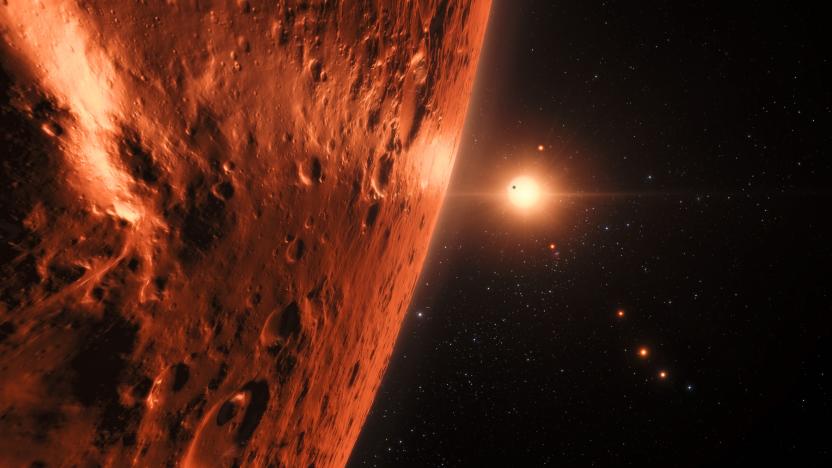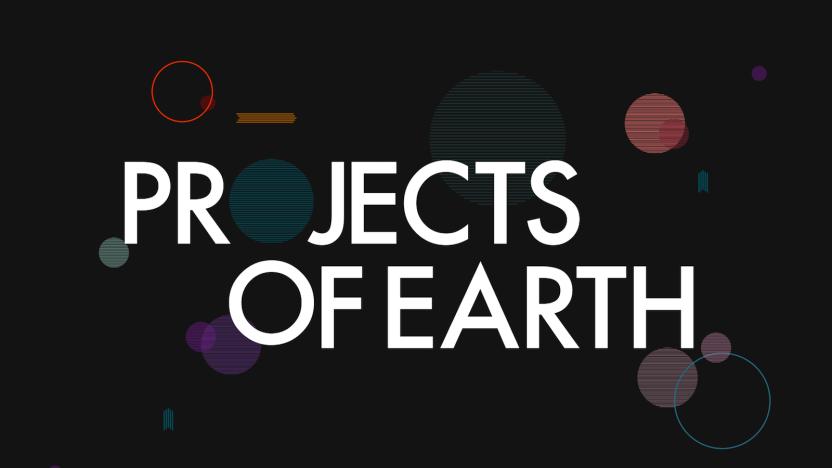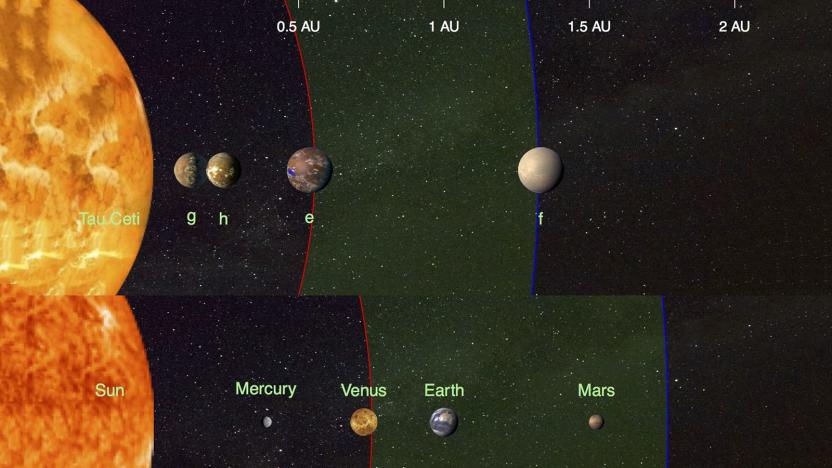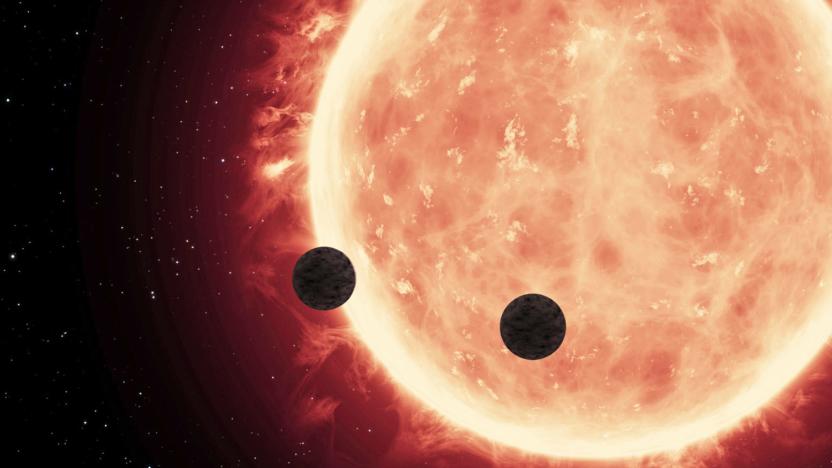exoplanets
Latest

NASA's TESS spacecraft may find 1,600 new planets in the next two years
On Monday evening, NASA plans to launch a brand new satellite into orbit, courtesy of a SpaceX Falcon 9 rocket. Called TESS (the Transiting Exoplanet Survey Satellite), the spacecraft is designed to detect planets outside our solar system (called exoplanets) that are relatively close to our solar neighborhood.

Life may be easier to find on planets outside the ‘habitable zone’
When scientists are looking for worlds that might harbor life on other planets, they tend to look for worlds that have features similar to Earth's. It makes sense; after all, our dominant theories on how life evolved on the planet center on the presence of oxygen, organic molecules and liquid water. But now, two scientists are positing that we may be severely limiting ourselves by only looking for rocky planets with surface oceans. A study published last week at arXiv.org outlines the possibility that it's more likely that scientists will find life on icy worlds with subsurface oceans.

NASA study will help identify potentially habitable planets
NASA has already found tons of exoplanets around nearby stars, and will spot countless more once the James Webb Space Telescope (JWST) launches. The problem is that scientists aren't exactly sure which planet-star combinations are most likely to support life. A new NASA study has found that planets orbiting small stars like Trappist-1 could retain their oceans for billions of years, even if they're quite close -- provided the star emits just the right amount of infrared radiation.

Hubble telescope spots evidence of water on Trappist-1 planets
Scientists say it's possible five Earth-sized planets orbiting Trappist-1, an ultra-cool dwarf star located 39 light years away, contain "significant amounts of water." An international team of astronomers used the Hubble Space Telescope (HST) to measure the amount of ultraviolet (UV) radiation hitting all seven Trappist-1 exoplanets. The phenomenon is important because low-energy UV radiation can break down water molecules into hydrogen and oxygen; higher levels heat the upper atmosphere to the point where the two elements can escape. UV radiation is therefore useful in modelling water loss and atmospheric stability in distant planets.

Kickstarter commemorates Voyager with projects celebrating humanity
Forty years ago, the two Voyager probes were launched and to honor the anniversary, Kickstarter has created Projects of Earth -- a group of campaigns inspired by the Voyager's Golden Record that offer "unique perspectives on humanity, culture and life on Earth." All of the projects will be launched between August 20th and September 5th -- the two dates of each of the Voyager probe launches -- and like the Golden Record, are meant to capture a portrait of our world as it exists today.

A nearby Sun-like star hosts four Earth-sized planets
Exoplanet discoveries are getting pretty common, so it takes something special to catch our attention. A star called Tau Ceti fits the bill, as it's just 12 light years away and unlike the Trappist-1 red dwarf, is very similar to our own yellow dwarf (G-type) sun. Researchers have determined that it probably hosts planets like Earth that sit in its habitable zone. The only hitch is that the star is known to have a massive debris disk that probably bombards its worlds with asteroids, so living there would be a pretty big challenge.

The search for a habitable second Earth
Contact with extraterrestrial life would be an epochal event. Even the discovery of a simple alien organism would be transformative, giving us unprecedented insight into how life forms on Earth and other planets. Yet, there's exactly zero proof that life exists beyond this world -- not one alien germ, spore or cell, let alone an advanced race that could save or enslave us. And we don't even know how life sprung up here 4 billion years ago from rocks, mud and water.

'EVE Online' is crowdsourcing the search for real exoplanets
EVE Online players will help scientists look for other planets from the comfort of their computer desks later this year. The game's developer, CCP Games, is teaming up with Massively Multiplayer Online Science (MMOS), the University of Reykjavik and the University of Geneva to crowdsource space exploration within EVE's virtual universe.

Hubble study finds two potentially habitable exoplanets
Scientists from MIT and the University of Liège studying a planetary system orbiting the star TRAPPIST–1 have discovered two rocky, Earth-like and potentially habitable planets only 40 light years away from home. According to a paper published in Nature today, the atmospheres on planets TRAPPIST–1b and TRAPPIST–1c are likely to be dense and compact like the atmospheres of Earth, Venus and Mars.

NASA's resurrected telescope seeks wandering planets
NASA is kicking off a search for free-spirited exoplanets as part of the Kepler space telescope's extended K2 mission. It's an impressive quest for an instrument that was all but written off several years ago because of damage to its control wheels. NASA managed to stabilize the device using radiation pressure from the sun and it's been spotting exoplanets, stars and galaxies ever since. Now, the space agency wants to use the device to survey millions of stars in the Milky Way galaxy looking for signs of "wandering" exoplanets with no companion star.

NASA finds 'super-Earth' with an atmosphere it can analyse
Astronomers at NASA, working with the ESA and the University College London, announced Tuesday that they have discovered a "super-Earth" exoplanet with an atmosphere, that, for the first time, they can analyse. The Hubble telescope's Wide Field Camera 3 (WFC3) first spotted the planet, dubbed 55 Cancri e, which is only about 40 light years away. Super-earths are simply rocky planets that are bigger than the Earth -- in this case, eight times bigger. They're widely believed to be the most common type of rocky planet in the galaxy.

NASA space telescope discovers Earth's closest rocky neighbor
NASA researchers working with the Spitzer Space Telescope announced on Thursday that they had indeed found the closest rocky exoplanet to our own. It's a tiny burg called HD 219134b that's just 21 light years from Earth in the Cassiopeia constellation, near the North Star. It was first spotted with the 3.6-meter Galileo National Telescope in the Canary Islands before being confirmed with the Spitzer. Even though the planet is larger than Earth, researchers only noticed it as it transited across the face of its parent star (astronomers look for the star to dim then brighten again as evidence of an orbiting planet). Unfortunately, there's basically zero chance that we'll find aliens there as 134b orbits far too close to sustain life.

NASA's new telescopes could spot alien life within 20 years
Convinced that there's got to be life on other planets? You're not alone in the universe -- in fact, many NASA scientists agree with you. And a panel convened recently by the space agency (see the video below) believes that finding it could happen soon, too -- perhaps "in twenty years" -- thanks to incoming telescope technology. Recent projects, like the Kepler Telescope, Dark Energy Survey and the Very Large Telescope have detected the presence of planets and even their atmospheres. But astronomers are even more excited about future projects like the Transiting Exoplanet Surveying Satellite (TESS) and James Webb Space Telescope, set to launch in 2017 and 2018, respectively.

Alt-Week 12.7.13: Wormhole short-cuts, watery planets and history as seen by Google Books
Alt-week takes a look at the best science and alternative tech stories from the last seven days. Don't pack your bags just yet, but Hubble has found indirect evidence of water on five different planets -- a lot of it, in some cases. Bigger brains than ours are also speculating that like black holes, distant particles can be bridged by a wormhole, creating space short-cuts. Back on earth, a new book called Uncharted tackles nothing less than all the trends in recorded history using eight million Google books. No big whoop, right? It's Alt-Week.

NASA gives planet-hunting TESS space telescope go-ahead for 2017 launch
NASA's Kepler space telescope hasn't exactly been a slouch when it comes to planet hunting, but that effort will soon be getting a considerable boost courtesy of a new mission selected by NASA as part of its Explorer program. Dubbed the Transiting Exoplanet Survey Satellite (or TESS), this new space telescope will one-up Kepler with the ability to perform an all-sky survey (an area 400 times larger than previous missions) to search for transiting exoplanets, with an eye towards planets comparable to Earth in size. TESS was developed by an MIT-led team, and will be placed in what they describe as a new "Goldilocks" orbit, allowing it to travel close enough to the Earth every two weeks for a high-speed data downlink while still remaining safely beyond the harmful radiation belts. It's now set for launch in 2017, when it will be joined by the Neutron Star Interior Composition Explorer (NICER), an addition to the International Space Station also selected as part of the Explorer program last week that will use a process called X-ray timing to study neutron stars.

Project 1640 offers new way to search for planets beyond our solar system
It's taken more than six years of development, but a new imaging system for the Palomar Observatory's 200-inch Hale Telescope finally started capturing images last month, and promises to aid significantly in the search for planets outside our solar system (otherwise known as exoplanets). With the suitably mysterious name of "Project 1640," the new instrument is the first of its kind that's able to directly spot planets orbiting distant suns -- as opposed to existing systems that use indirect detection methods to determine the orbit of exoplanets. To do that, Project 1640 effectively blots out the light from stars, which allows astronomers to more clearly observe what might be around them, including objects up to 10 million times fainter than the star itself (the image on the right above is a nearby star captured with the imaging system in place, compared to the same star captured without the new system on the left). Those curious can find more specifics on just how that's accomplished in the official announcement linked below.

Infrared telescope can pick out the atmosphere on distant planets, smell what the aliens are smelling
Astronomers in Chile using the European Southern Observatory's Very Large Telescope are now able to analyze the atmosphere on faraway planet Tau Bootis b. Using CRIRES, a supercooled infrared spectrograph bolted to the 'scope, the team was able to judge the size of the exoplanet -- and for the first time, take a reading of the atmosphere while not in transit. Historically, the only time researchers have been able to conduct atmospheric analysis is during the transit of its nearby star, which imprints the qualities of the atmosphere onto the light. The team found that Tau Bootis b is around six times the size of Jupiter, but its air is so thick with Carbon Monoxide that we'll have to look elsewhere to plan that expedition to the stars.

New radio wave technique could detect alien planets, receive interstellar tunes
Any experienced planet hunter will tell you: finding exoplanets is the real challenge, where hardened professionals go to test their mettle. These tricky bodies stymie conventional methods – like seeing a planet pass in front of its parent star – because exoplanets often have decades-long orbits, meaning you could spend a lot of lonely nights fruitlessly searching the skies. So scientists at the University of Leicester in England developed a new approach: looking for radio waves emitted when ultraviolet flares light up the atmospheres of planets like Saturn and Jupiter. The flares – auroras – even if invisible to ordinary telescopes, are detectable by radio telescopes like the European Low Frequency Array (or LOFAR, pictured above). The scientists hope those methods will help them discover planetary systems up to 150 light-years away, perhaps even some that can sustain life. And, of course, keep them one step ahead of Richard Branson. [Image credit: LOFAR / ASTRON]








